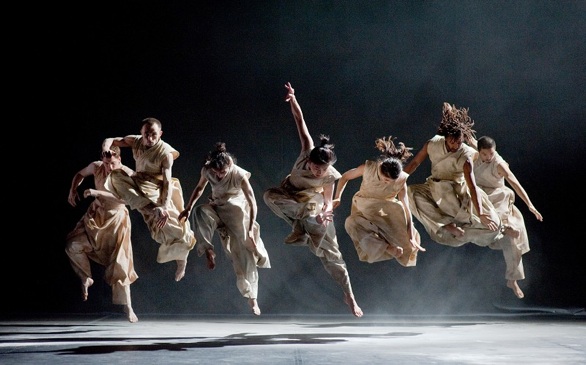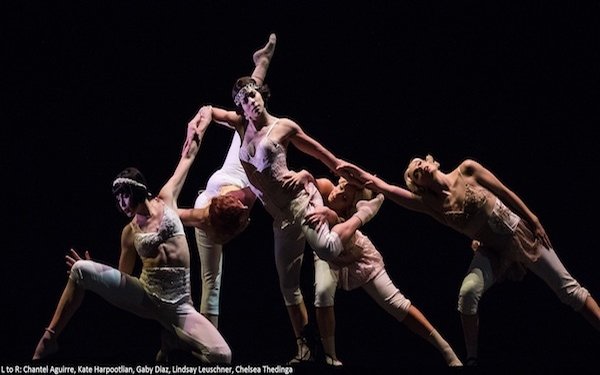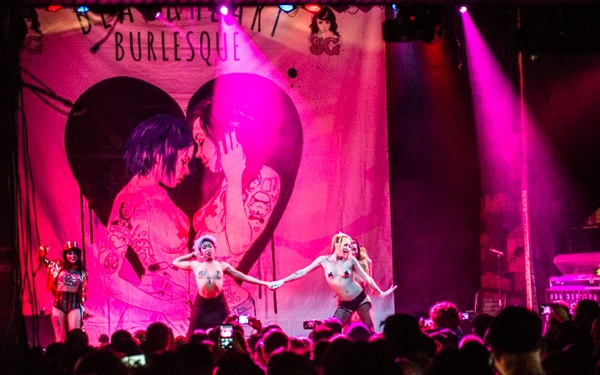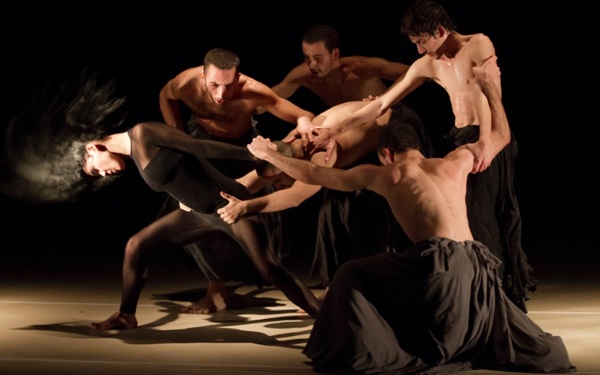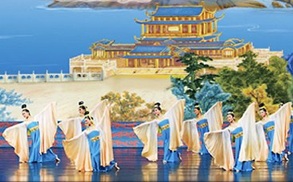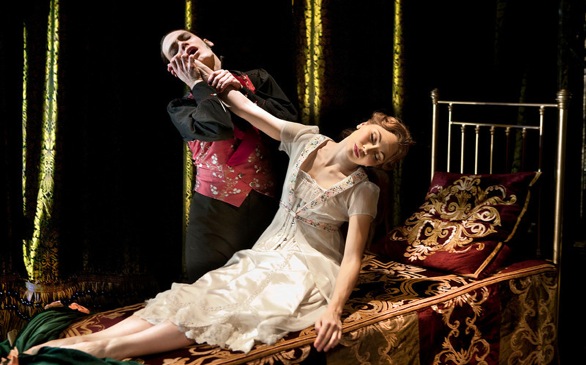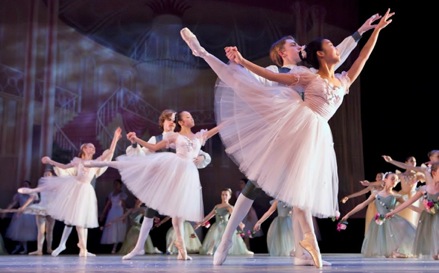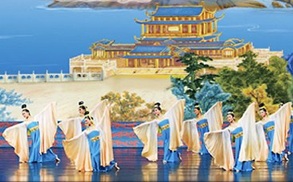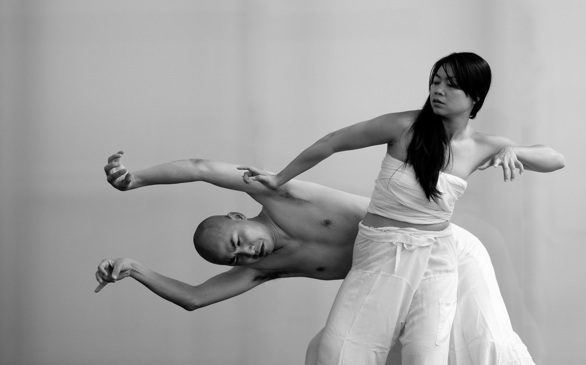Transcendence through dance -- some have found it on the dance floor at a club, rave or during a more mystical journey through eastern religion's ecstatic dances. All are meant to elevate the spirit and the soul from the body through movement.
U.K. choreographer Akram Khan's newest full-evening piece "Vertical Road," performed at UCLA's Royce Hall last weekend, is a similar search for a path between the world and the heavens.
Khan attempts to push back against the accelerating culture that propels us forward instead of upward. His eight-person ensemble digs deep into the gravity of the stage with strong, rhythmic footwork that's rooted in the East Indian Kathak dance that the Bangladeshi Khan is trained in, and strong, gestural arms that pull the viewer into the journey. It is all framed by the pulsating, heavy beat of the music composed for this piece by collaborator Nitin Sawhney. The sonic thrust of the loud, beating music drives the piece, making the source of the strength indistinguishable from movement or music.
A tribal vibe permeates the work. The company appears as a lost clan in the desert, dust rising from their layered white robes. There is stillness (and staging) similar to a Japanese Butoh dance's slow elegance. Khan’s dancers are immersed in a dream-like state throughout much of the work, sometimes propelling forward by the driving rhythms and other times they are manipulated by the invisible strings of a fellow dancer. Often, they are literally and physically being tossed around by one another.
As the piece quiets down in the second section, the heaviness of the first section is replaced by gravity defying lightness. Solos and duets highlight the fluidity of the body's movement as the dancers barrel roll across the stage, easily lifting and tossing each other in.
However, in spite of the dance's flow, it is here that "Vertical Road" spends too much time to find its imagery; it wanes for too much in the 75 minutes. The limited vocabulary becomes redundant, solos become predictable and images become literal.
As a reading into the meaning of each image becomes necessary, the depth and energy of the piece withers rather than blossoms. As an audience member, is it possible to find our own transcendence through choreography rather than dance, with its necessary shaping of time in a full-evening work? Or does the theatricality detract from the pure flow of movement?
In "Vertical Road," the quest to find Nirvana through movement is stunted. Perhaps it's a metaphor for man's search for meaning in the universe or for life after death. Or perhaps the life energy created on the stage must also dissipate without resolution.


